Puzzle Universe 1:
Making a Universe
So the universe started with a big bang. That accounts for a lot of evidence, but to a naïve mind it sounds like magic.
Fig. 1

It gets worse. Shortly after the bang, the universe enlarged faster than the speed of light. But special relativity says E= mc2, and you can’t exceed the speed of light. Don’t worry about proving the theory; it’s just algebra working on well proven scientific laws. Einstein was kind enough to write the explanation – actually a proof – suitable for a general reader, who would be about like me. Ok. I took calculus in high school and a couple of semesters in college and actually passed, which left me with less competence in math than I would have expected. Reading Einstein was like listening to a conversation in a language similar to your own, like French or German if you speak English. With the help of a few words you know, you might be able to catch the drift. English would not help that much in say Chinese or Japanese.
I picked my way through it, recognized a few things like the Lorenz contraction and Maxwell’s field equations and concluded it was watertight. You can’t exceed the speed of light.
Ah, but it wasn’t the matter in the universe that exceeded the speed of light. Space itself was expanding. That’s not much help for the naïve mind.
At the beginning, everything was photons and other primary stuff: no ordinary matter. But the only way to go from primary stuff to ordinary matter is for stuff to be “observed,” to react with ordinary matter, and there wasn’t any. There had to be a “big observation.” Sounds sort of biblical: And God said, Let there be light: and there was light. And God saw the light, that it was good. That proves nothing, but I think a prudent person might be forgiven for being very cautious.
After the Big Observation, the laws of nature were established, and they turn out to be just right for life. The universe appears to have continued to expand but at a moderate rate.
Most of the matter is normal matter with vanishingly small amounts of anti-matter. This is a jolly good thing for life since the collision of a star with an anti-matter star would disrupt things far and wide. “Jolly good” of course means it stinks of magic.
There were random fluctuations in the initial energy, and they can be seen, but they aren’t really big enough. No problem, that initial expansion smoothed them out like you’d get wrinkles out of a sheet by tugging on it. But it should have taken more than one tug. A sheet sure does. Also there would have been random fluctuations in the distribution of matter. That would have to be straightened out at the same time, like straightening a sheet and blanket at once with a single tug. Tricky.
Then there is life; energy comes in, makes life and the energy goes away at a lower temperature. Ok, but why pause; why not just interact with matter and get re-radiated as heat?



 energy matter life energy
energy matter life energy
or

 energy matter energy
energy matter energy
If you look at a galaxy, the stars are moving as if there was more mass than the stars themselves have. The rest is “dark matter.”
If you look at distant galaxies, it looks like the expansion of the universe is speeding up. This is called “dark energy.” Seems a bit spooky to me.
Anything science can learn can be taught to a computer. Alan Turing proved that a computer cannot do abstract reasoning. As with Einstein’s theory of relativity, I’ve had a look into it and emerged without a total understanding, much less now remembering, but being convinced. It matters not if you look for a massively parallel quantum computer with deep learning and so forth. The proof does not change. A computer can work with anything science offers. So in spite of a lot of money being spent and many capable people drawn away from work that might actually be productive, we can neither understand nor build a machine that can do abstract reasoning. But we do abstract reasoning.
Take the number zero. What is it in Roman numerals? You know, “I is one, IV is four, V is five and VI is six.” I suppose you could say IIIIIV is zero, but the Romans never did. Zero is tricky. A child cannot really understand it until age 4. The Mayans are said, (I don’t know; I wasn’t there.) to have had a formal way of expressing zero in their knotted string notation. Apparently they got it from the Olmecs, so it dates back some centuries BC. In western civilization the formal written number zero started in India about the time Europe was entering the Dark Ages. But recent work suggests the bees are able to learn to understand zero. Since our ancestors split from theirs about the time of the Cambrian era, it can hardly have been inherited, nor can it be considered an emergent property of our super large brains. So abstract reasoning is somehow a property of the universe that will never be explained by science.
People, even animals, understand fair and unfair, if maybe to different degrees. How? Again, it’s not an emergent property of the brain, so moral order has to be a property of the universe.
There was no evident life for a long time after the Big Bang. In some billions of years, the energy in the universe will be so diluted out over the expanding space that it is difficult to belive that life will continue to be possible. Thus:

 No life life no life
No life life no life
What’s the point?
And why is there anything at all?
So there are a lot of things that look like magic. And I don’t like magic. If there is magic, then nothing makes sense. Any prospect for the future you might devise must include, “Magic permitting.” Begging your patience, I’ll try to get rid of any need for magic.
We’ll not be able to get rid of everything that looks like magic, but maybe we can reduce the number of things. First let me borrow a neutron; L (I frown will mean I must resort to magic. A smile means I have dismissed something that seems like magic.) I won’t need your neutron long. The use of this neutron constitutes our first use of magic.
We shall assume there is nothing, which is the whole point, and call this nothing “Out There.” So what must it be like Out There?
- No matter.
- No rules of logic. (You can’t have logic without a universe to be logical about.)
- No dimensions and an unknown number of potential dimensions, at least 3.
- Time undefined, so we shall set it at zero and neither going forward nor back.
- No moral order, good or bad.
So we set your neutron loose. It follows an irregular course, because places where it bunches up tend to pull the path inward by gravity; you lent me gravity when you lent me the neutron, because a neutron has mass. The reason all neutrons are alike is because it’s all the same neutron.
Eventually the neutron flies right up its own tailpipe, and I can give it back to you at exactly the time and place you lent it to me. Let’s say the path of the neutron was, a tad simplified, like this.
Fig. 2


The two triangles are where you gave me and then took back the neutron. The path is clumpy because gravity tends to pull the neutron into a place where there are other neutrons. We shall declare the clumps to be mass. Of course, the neutron may turn into a proton and electron and a bit of energy, and the same process can go in reverse. There’s not much anti-matter because the neutron you lent me was a garden variety one.
Now that we have collections of mass, we can define time. If you are looking down at something heavy, and I am down there shining a light up to you, the light has to climb against gravity, which makes it lose energy, which gives it a longer wavelength, so it wiggles slower. I don’t make much of that up when I come up to you. So time is moving slower for me down here than it is for you up there.
Fig 3 Down a gravity well.
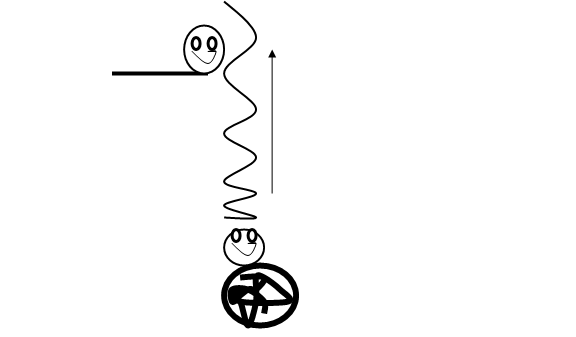
Now suppose our tangle of neutron path is so dense that light cannot escape at all. The upgoing wiggle above comes to a dead stop. That is a black hole; ours will be three dimensional. Now that we have a black hole we can define a difference between In Here and Out There.
Fig 4
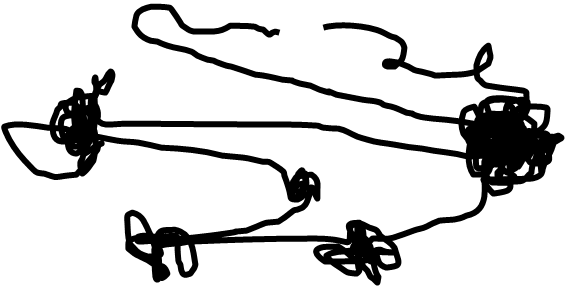


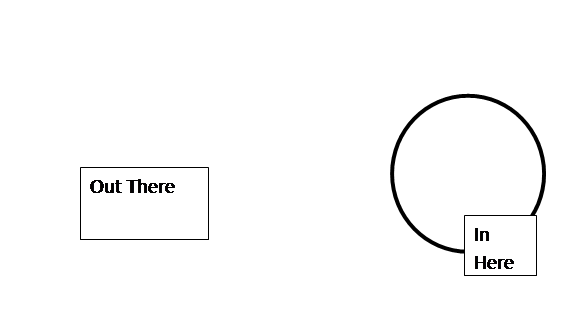
Out There time can wander around in any direction in any place; on average it will be slightly the opposite of time In Here. But In Here it has to move always in the same direction, since our black hole, the contents, are contracting and the gravity well us getting deeper. We will say that Out There time is moving forward while In Here it moves backward. Not only can nothing get out, nothing that falls in can catch up with what’s already here so In Here we are truly isolated. Of course, it all has to wind up crunched in the middle, the opposite of the big bang, which didn’t happen; it just looks like that from In Here. J
Once the crunch starts, nothing can stop it, because strong things carry sound faster; eventually that sound would exceed the speed of light, which it can’t so there’s runaway collapse. J Since matter is pulling on space, we aren’t surprised that it looks like space itself is falling in. J
Either the laws of nature came with the neutron or the fact that the universe was going to have to produce life (wait for it) the laws had to be suitable. J
Now if you take a universe that contains a photon and a warm particle and change the size of the universe, the photon will change right along with it. It doesn’t take any more information to find the photon since it occupies the same fraction of the universe, which is to say or “In Here.” And the information content, and the energy equivalent, of knowing where the particle is changes because the temperature of the particle changes on average. (If you’ve forgotten Maxwell’s Demon, ask that guy over there later.)
But something is missing. Particles of matter act differently If you look at the energy of the particles in a gas, they are distributed along a curve such that the lowest energies have the most particles.
Fig 5
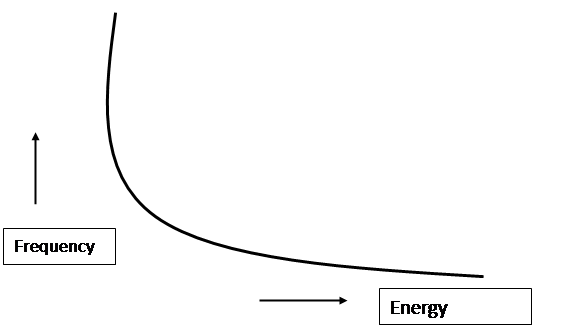
At absolute zero, they all have no energy. Therefor the information about their location is zero. Their location is indeterminate – absolutely indeterminate.
Fig 6




That would mean that their location was somewhere in unlimited space. Each could with equal probability be anywhere In Here, in fact it could just as well Out There, and since Out There has to be a lot larger than In Here, the chance of it even being In Here is vanishingly small. Steven Hawking worked it all out – it was his masterpiece – and the phenomenon is called Hawking radiation. It hasn’t actually been observed, but serious workers do not question Hawking’s calculations.
Some clever guys took a very cold gas and placed the particles at some positive level using lasers.
Fig 7



Now the distribution is upside down. Instead of the energies being piled up around zero, they are piled up at a positive value, and (wait for it) the temperature is negative. But to get there it had to go through zero. The whole lab should have zipped off to Out There. But it didn’t not even the sample vanished. So there is information in the location of a particle that is independent of its temperature.
To be continued.
BREAK
But you knew that had to be true. According to the curve, the most likely temperature is zero anyway. Those particles should locate themselves at random, mostly Out There. The universe would boil away on the PDQ. So as In Here collapses, energy piles up. There’s no quantum mottle, because quantum uncertainty only happens in reverse time. J6, 7
There’s no difficulty having orderly systems like life build up, because in forward time, order builds up automatically. J8 Of course In Here we say that disorder is always increasing just as energy is always being dispersed, which is well and good but only in reverse time.


 Since the temperature-independent location of matter is real information, and since information energy mass gravity, dark matter is just what you would expect. J9
Since the temperature-independent location of matter is real information, and since information energy mass gravity, dark matter is just what you would expect. J9
If we were Out There watching the universe collapse, we would see gravity building up, which means time is slowing down. From In Here when we look out in space we see the universe when it was more collapsed, time was slower so it looks like we are speeding up. There’s your dark energy. J10.
Now we’re going to need a second piece of magic. We’ll call it a doohickey. L 2
Fig 8

This thing has awareness, a memory – which is not always available to awareness – and abstract reasoning. You might say that these are just three different ways of describing the same thing, if you like. It should be familiar; it’s your personality.
Now Turing proved you can’t make the doohickey In Here; the laws of logic won’t permit it. So it had to exist Out There. And like the neutron it takes many trips through the In Here. So be nice to people, each of them is just you at a different point along your path. J 11
Out there, since time can go any old way, there is no difference between good and bad, help and harm, creation and destruction. But In Here, the difference is obvious. Somehow the doohickey has figured that out. J 12
And that is the point of the whole thing. In its many trips through the In Here, the doohickey has had the opportunity to experience existence in a universe with moral order. J 13
The doohickey of course comes back in parallel experience,
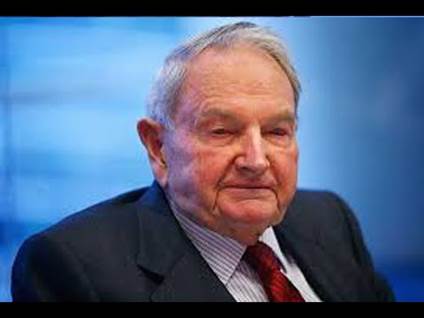

not to be confused with reincarnation, which can only run in series.

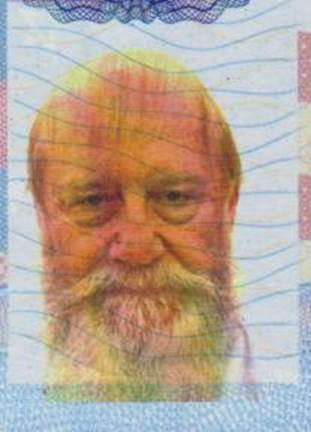
A final word of caution (as if you needed it.)
If you are In Here and see something fall into a black hole in reversed time, in other words time as we usually understand it – outside the black hole on Monday and inside on Tuesday – it would unambiguously establish which way time is going. They think they have seen two black holes spiraling into each other by seeing their gravity waves.
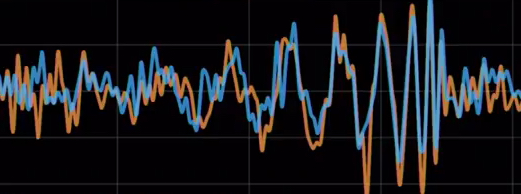
There are two colors because there are two sensors. What might we expect to see?
- Background noise with oscillation emerging. Check.
- If the black holes are different sizes, the heights of the peaks alternate higher and lower. Check.
- The oscillations speed up as they spiral inward. Check.
- The waves get higher. Check.
- As the holes themselves swallow more and more of the energy, the waves start go get lower. Check.
- As the gravity well slows time, the waves get slower. Check.
Their data pass six tests. That’s pretty good.
But the whole thing works just as well in reverse, so it’s really no help in telling us which way time is going.
What we need is to identify both objects on Monday and only one on Tuesday OR one on Monday and two on Tuesday.
Maybe tomorrow. Or maybe we’ll wake up Out There.
Puzzle Universe 2:
Making a Universe
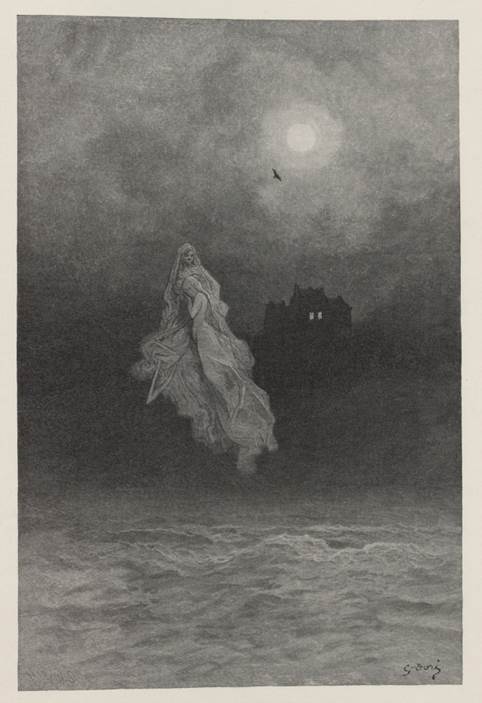
https://hyperallergic.com/102457/rediscovering-the-dark-splendor-of-gustave-dore-with-edgar-allan-poe/ downloaded Feb 18, 2018
We’ll not be able to get rid of everything that looks like magic, but maybe we can reduce the number of things. First let me borrow a neutron; L (A frown will mean I must resort to magic; a smiles will mean I have accounted for something that might have looked magic without stooping to that.) I won’t need your neutron long. The use of this neutron constitutes our first use of magic.
We shall assume there is nothing, which is the whole point, and call this nothing “Out There.” So what must it be like Out There?
- No matter.
- No rules of logic. (You can’t have logic without a universe to be logical about.)
- No dimensions and an unknown number of potential dimensions, at least 3.
- Time undefined, so we shall set it at zero and neither going forward nor back.
- No moral order, good or bad.
So we set your neutron loose. It follows an irregular course, because places where it bunches up tend to pull the path inward by gravity; you lent me gravity when you lent me the neutron, because a neutron has mass. The reason all neutrons are alike is because it’s all the same neutron.
Eventually the neutron flies right up its own tailpipe, and I can give it back to you at exactly the time and place you lent it to me. Let’s say the path of the neutron was, a tad simplified, like this.
Fig. 2
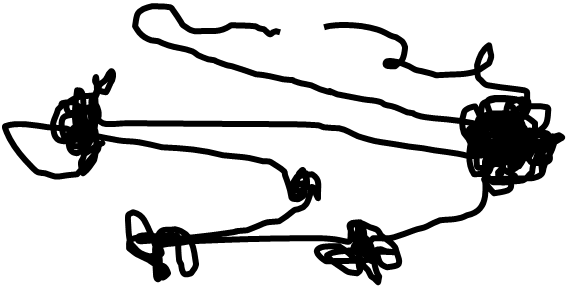
You see where you gave me and then took back the neutron. The path is clumpy because gravity tends to pull the neutron into a place where there are other neutrons, which is to say the same neutron at a different part of the path. We shall declare the clumps to be mass. Of course, the neutron may turn into a proton and electron and a bit of energy, and the same process can go in reverse. There’s not much anti-matter because the neutron you lent me was a garden variety one.
Now that we have collections of mass, we can define time. If you are looking down at something heavy, and I am down there shining a light up to you, the light has to climb against gravity, which makes it lose energy, which gives it a longer wavelength, so it wiggles slower. I don’t make much of that up when I come up to you. So time is moving slower for me down here than it is for you up there.
Fig 3 Down a gravity well.
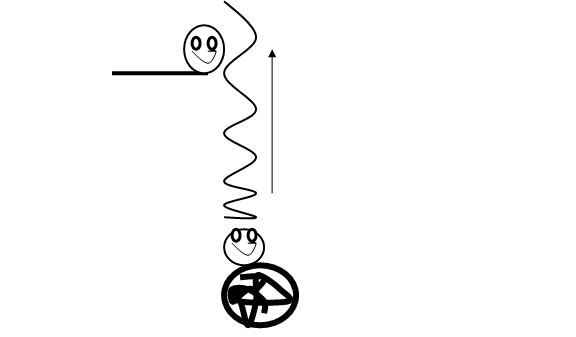
Now suppose our tangle of neutron path is so dense that light cannot escape at all. The upgoing wiggle above comes to a dead stop. That is a black hole; ours will be three dimensional. Now that we have a black hole we can define a difference between In Here and Out There.
Fig 4
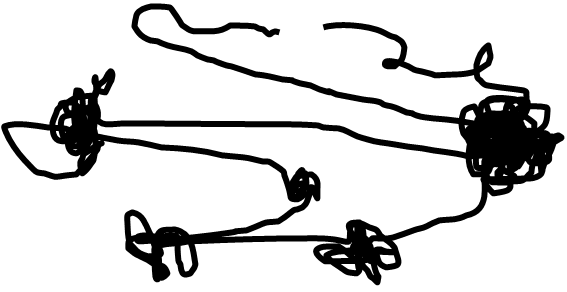
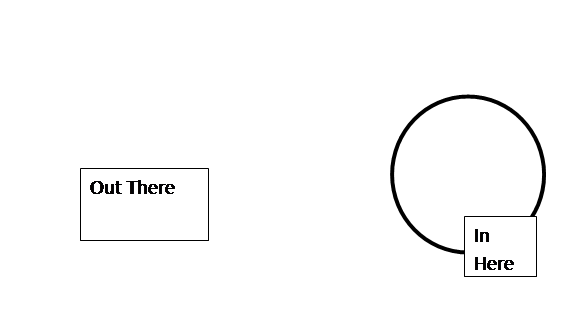
Out There time can wander around in any direction in any place; on average it will be slightly the opposite of time In Here. But In Here it has to move always in the same direction, since our black hole, the contents, are contracting and the gravity well is getting deeper. We will say that Out There time is moving forward while In Here it moves backward. Not only can nothing get out, nothing that falls in can catch up with what’s already here so In Here we are truly isolated. Of course, it all has to wind up crunched in the middle, the opposite of the big bang, which didn’t happen; it just looks like that from In Here. J
Puzzle Universe 1:
Making a Universe
Part 3

https://www.google.com/search?q=dore+illustrations+for+raven&source=lnms&tbm=isch&sa=X&ved=0ahUKEwjbz_apjZTaAhUPM6wKHZSwBaoQ_AUICigB&biw=1260&bih=641#imgrc=Khf6qZZg75ioRM: downloaded 3/30/18
Once the crunch starts, nothing can stop it, because strong things carry sound faster; eventually that sound would exceed the speed of light, which it can’t so there’s runaway collapse. J Since matter is pulling on space, we aren’t surprised that it looks like space itself is falling in. J
Either the laws of nature came with the neutron or the fact that the universe was going to have to produce life (wait for it) the laws had to be suitable. J
Now if you take a universe that contains a photon and a warm particle and change the size of the universe, the photon will change right along with it. It doesn’t take any more information to find the photon since it occupies the same fraction of the universe, which is to say of “In Here.” And the information content, and the energy equivalent, of knowing where the particle is changes because the temperature of the particle changes on average. (If you’ve forgotten Maxwell’s Demon, ask that guy over there later.)
But something is missing. Particles of matter act differently. If you look at the energy of the particles in a gas, they are distributed along a curve such that the lowest energies have the most particles.
Fig 5
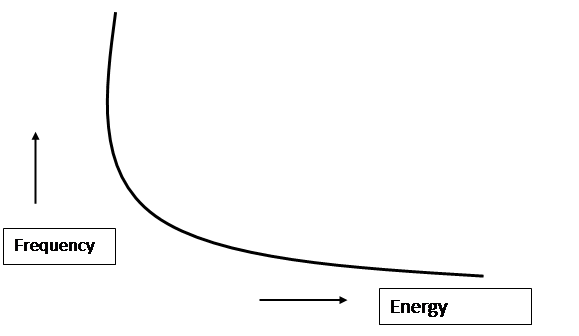
At absolute zero, they all have no energy. Therefor the information about their location is zero. Their location is indeterminate – absolutely indeterminate.
Fig 6 , Frequency



................  Energy
Energy
That would mean that their location was somewhere in unlimited space. Each could with equal probability be anywhere In Here, in fact it could just as well Out There, and since Out There has to be a lot larger than In Here, the chance of it even being In Here is vanishingly small. Steven Hawking worked it all out – it was his masterpiece – and the phenomenon is called Hawking radiation. It hasn’t actually been observed, but serious workers do not question Hawking’s calculations.
Some clever guys took a very cold gas and placed the particles at some positive level using lasers.
Fig 7
. ........................................
Frequency

............. Energy
Energy
Now the distribution is upside down. Instead of the energies being piled up around zero, they are piled up at a positive value, and (wait for it) the temperature is negative. But to get there it had to go through zero. The whole lab should have zipped off to Out There. But it didn’t not even the sample vanished. So there is information in the location of a particle that is independent of its temperature.
But you knew that had to be true. According to the curve, the most likely temperature is zero anyway. Those particles should locate themselves at random, mostly Out There. The universe would boil away on the PDQ. So as In Here collapses, energy piles up. There’s no quantum mottle, because quantum uncertainty only happens in reverse time. J6, 7
There’s no difficulty having orderly systems like life build up, because in forward time, order builds up automatically. J8 Of course In Here we say that disorder is always increasing just as energy is always being dispersed, which is well and good but only in reverse time.
Since the temperature-independent location of matter is real information, and since information
energy  mass
mass  gravity
gravity  dark matter is just what you would expect. J9
dark matter is just what you would expect. J9
If we were Out There watching the universe collapse, we would see gravity building up, which means time is slowing down. From In Here when we look out in space we see the universe when it was more collapsed, time was slower so it looks like we are speeding up. There’s your dark energy. J10.
Now we’re going to need a second piece of magic. We’ll call it a
doohickey. L
Fig 8

This thing has awareness, a memory – which is not always available to awareness – and abstract reasoning. You might say that these are just three different ways of describing the same thing, if you like. It should be familiar; it’s your personality.
Making a Universe Part 4

https://www.facebook.com/BJsRavensWolvesEmpire101/photos/rpp.200170410391714/385678228507597/?type=3&theater
Now Turing proved you can’t make the doohickey In Here; the laws of logic won’t permit it. So it had to exist Out There. And like the neutron it takes many trips through the In Here. So be nice to people, each of them is just you at a different point along your path. J 11
Out there, since time can go any old way, there is no difference between good and bad, help and harm, creation and destruction. But In Here, the difference is obvious. Somehow the doohickey has figured that out. J 12
And that is the point of the whole thing. In its many trips through the In Here, the doohickey has had the opportunity to experience existence in a universe with moral order. J 13
Making a Universe Part 5
Bell’s inequality
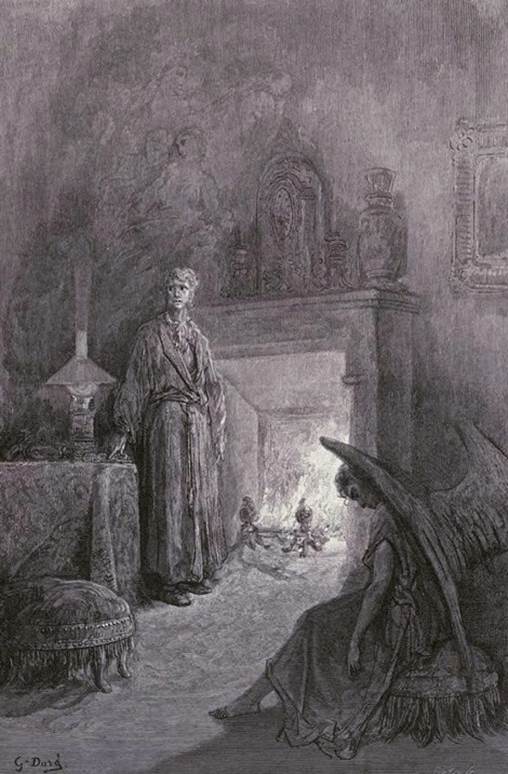
I have been meaning to give two more talks on what you find if you treat the universe as simply a puzzle instead of whatever emotionally charged other thing you prefer. And unsurprisingly reason and passion have given us different interpretations. Alas my shriveled old brain has forgotten my final, climactic exposition, but I do remember that I needed to speak of “Bell’s Inequality” so I’ll do that before straying off to some stuff with political and some stuff with highly dubious content.
John Stewart Bell FRS was a physicist born in Northern Ireland in 1928. Among other accomplishments he pronounced what has been called the most profound discovery in science ever (of course I’d say number two; number one is explained in this series), which is: No physical theory of local hidden variables can ever reproduce all of the predictions of quantum mechanics.
That one may seem a bit too abstract. What is the ordinary slob like me supposed to do with “all the predictions of quantum mechanics”? So let me pull an example from Wikipedia. (https://en.wikipedia.org/wiki/Bell%27s_theorem)
Imagine a way to split a particle (with certain properties, one of which is “spin.” We’ll pretend that really means spin, although definitions get really hairy in this field. Assuming the parts of the particle are the same weight, then the spin of one has to be equal and opposite the spin of the other. Else we would violate the principle of “conservation of momentum” and find the universe lurching one way and then the other for all the world like me fumbling for the bathroom light in the wee small hours. We shall say that if the two particles could be examined, finding equal and opposite spin would prompt us to say they “match,” although of course they don’t really.
So we set up a beam going two directions, with a “spin detector” recording the spin as “down” or “up” (another hairy definition, alas) for each passing particle. If we set up a second “spin detector” on the other beam aligned exactly the same way, we would find a match every ever-loving time. Got that? And if we rotate detector two 90° we expect zero matches.
We rotate detector two 1° to the right of center so everything matches. Now we ought to get about 99% match. That’s because 1oo, as in % is pretty close to 90, as in degrees. If we rotate it another degree, for a total of two, the number of mismatches should be 98% OR MORE, according to classical physics. But quantum physics says the mismatch will be LESS. That is the inequality. Or maybe I have it backwards. Go to Wikipedia yourself, it will be good for your soul.
In order to account for the difference, you have to have the particle at detector one knows what has happened at detector two. Bell outlined three ways it might know. First, a signal might travel from detector two, bringing the information. But that would mean exceeding the speed of light in order to get there in time, and we usually reject that one. Second, the settings at both ends of the study were established from the foundation of the universe, and all existence is totally pre-ordained. We reject that one because we don’t like it. Third, and most weirdly, the photon at two DOES NOT COMPLELETLY EXIST until it has been measured, whether that measurement is done at detector one or detector two. In short nothing exists until it is observed. Hence the old riddle, “If a tree falls in the forest and nobody is near enough to hear, does it make a sound?” Presented without background, the riddle is just silly. A dear friend has rephrased it, “If a man alone in a forest says something and no woman hears him, is he still wrong?”
I grew up in the era when the third exlplanation was totally accepted by science. Then in medical school they told us that you could alter somebody’s memories under certain circumstance. Well if the memory of the result of the measurement changes, the clearly the measurement has changed and reality is different. This piece of madness kept me amused for some time.
Of course, by now you have picked up on the fact that it is actually explanation two that is true. Number three is spooky and unnecessary. There is absolute pre-ordination of absolutely everything and we are quite used to it. Time runs backwards, the past is the future, and it all makes perfect sense.
Home page.






















